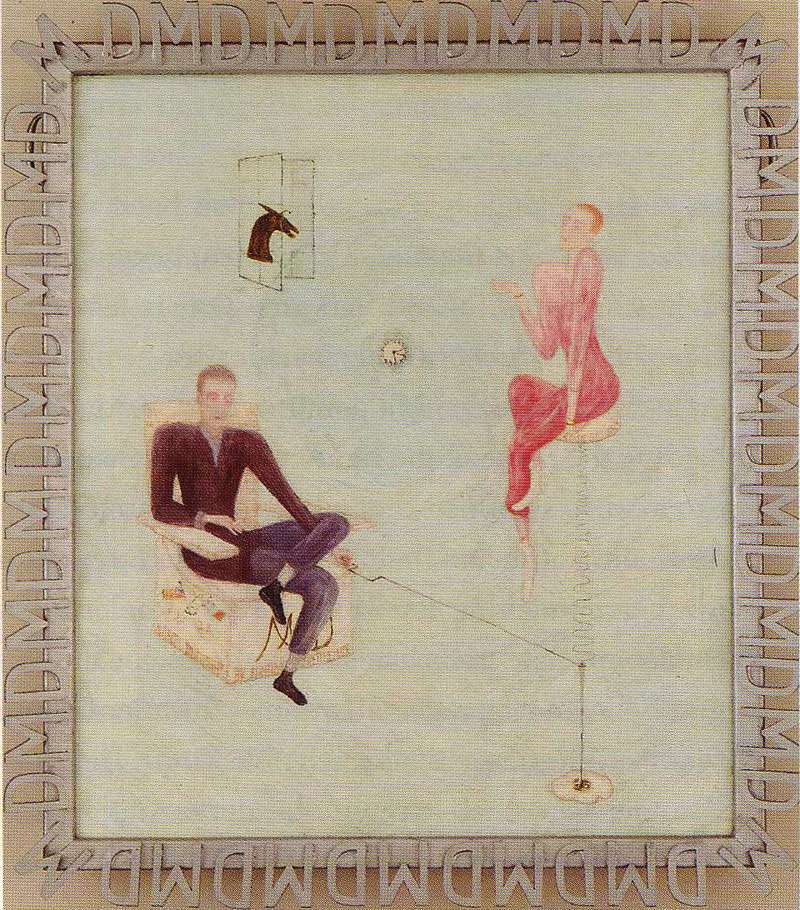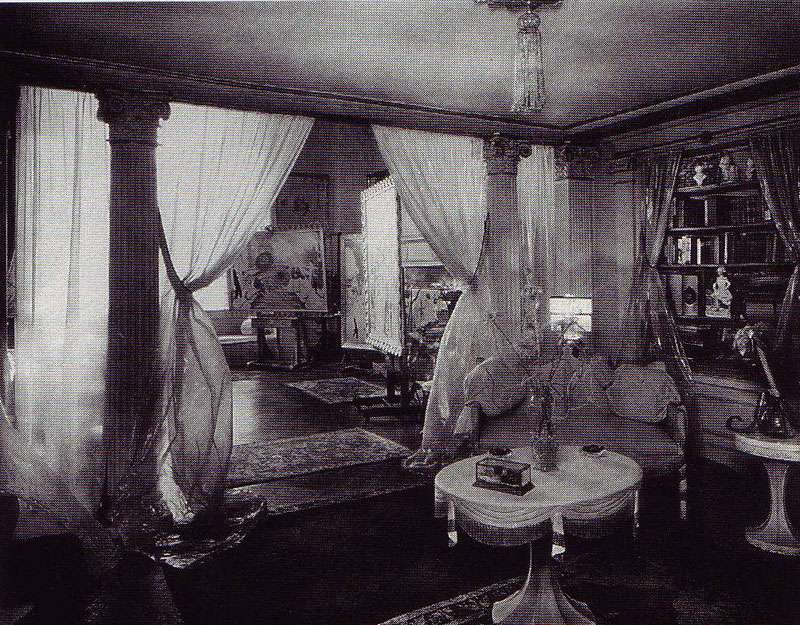
Above: Florine Stettheimer's apartment, including furniture designed by the artist, and her paintings Music (1920) and Portrait of Myself (1923)
Even lesser known than her paintings is the careful consideration she took in displaying them, designing each frame and even furnishings (consoles, benches) to complement her canvases. Stettheimer had no financial need to sell her work and instead displayed the vignettes in her fashionable (if slightly insane) New York City apartment overlooking Bryant Park. Swathed in a VAST amount of cellophane and copious quantity of lace, one gets the sense that her apartment, and furnishings were an extension of her aesthetic- her paintings and especially the sets she designed for Virgil Thomson's Four Saints in Three Acts reflect the same brand of whimsy.
Above: Stettheimer's studio space, complete with cellophane galore, a crystal floral bouquet, and another of her trompe l'oeil drapery furniture pieces.
Anyway, the voyeur in me LOVES a good, intimate peep into the life of an artist via her interior, and I've always found Florine's (oh, it's like we're on first name basis) interesting because of the scope of her aesthetic. She didn't miss a detail! What's more, I find it even crazier to think about this is the context of some of the more industrially influenced, modernist designs of her time- her frouf flies in the face of that, and yet, she was obviously... committed to her aesthetic.

Above: Sketches for furniture, and Florine Stettheimer's apartment, with Sun (1931) hanging over a commode the artist designed
Her divinely cool trompe l'oeil furniture reflects the aesthetic of her paintings. Tragic that it was all donated to Columbia's student theater, where every single piece has since gone missing over the years.

Above: Sun (1931)
Above: Portrait of Myself (1923)

Above: Portrait of Marcel Duchamp (1923), in the frame that the artist designed









